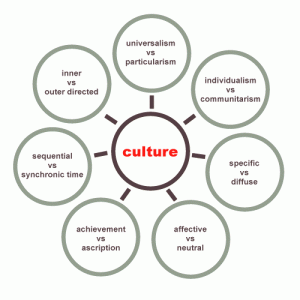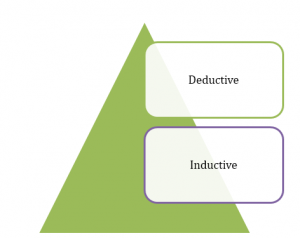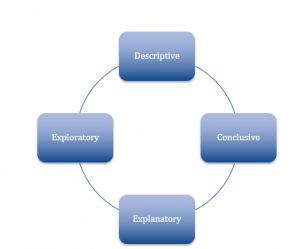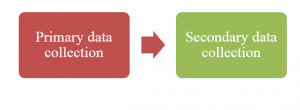Cross Culture Management and its Effects on Productivity
Get Curiosity Creativity and Research Best Assignment Sample
1. Introduction
The main aim of the present study will focus on the analysis of cross-cultural management and its impact on the productivity of employees. In presenting the analysis the study will form a research objective and research question. This will be followed by the formation of dependent and independent variables which will enable to present a clear picture of the impact of cross-cultural management. This will also present the relevant theories of the dependent and independent variable and will draw a clear picture of the methodology that will be used in completing the research work.
1.1 Research aim
The main aim of the research is to provide an analysis of the impact of cultural difference on the productivity of the employees.
1.2 Research objective
- To analyse the impact of cultural difference on the teamwork
- To investigate the impact on productivity due to cultural diversity in management
- To examine the relationship between the cultural diversity and productivity of employees
1.3 Research question
- What will be the impact of cultural differences on the teamwork of the employees?
- What will be the impact on productivity due to cultural diversity in the management?
- What will be the relationship between cultural diversity and productivity of the workforce?
2. Literature review
The dependent and the independent variable that will be considered for the analysis are: the cross-culture of management will be considered as the independent variable and the productivity of the employees will be considered as the dependent variable.
2.1 Concept of cross-cultural management
Cross-cultural management is the study that will help to analyse the cultural backdrop of an individual. On the other hand, culturally diverse administration can be comprehended as the organization of people and exercises that incorporate another culture scenery and dynamic foundation (Ogonowski, 2017). The research paper will be identified with cross-culture centers around the pivotal thoughts, for example, preparing and urging the ways to manage conflicts of the assorted culture and start practical and sound administration. The key target will be to design a feasible administration structure and the official’s part over the unmistakable culture establishments. It will similarly plan to use tries’ benefits, especially apply potential estimation of endeavors capability and effectiveness.
2.2 Theory of cross-culture management
Trompenaars theory of cross-culture management
The theory of Trompenaars will suggest that culture will play an important role in solving the problems of an individual. Based on the theory it is specified into 7 dimensions that will help to figure the impact of cross-culture management.
Universalism versus particularism – The key estimation will portray the ways one individual judges the demonstrations of their accessories. Individuals from universalistic social requests base more on rules, will dynamically exact while depicting understandings and will when in doubt depict by and large measures for affiliation methods and HR rehearses. According to Caputo et al. (2018) stated that inside progressively particularistic national social requests, the thought is more on the affiliations; understandings can be changed as per fulfil new necessities in unequivocal conditions and neighborhood combinations of affiliation and HR methods are made to fit in with various fundamentals.

Figure 1: Trompenaars theory
(Source: Li et al. 2017)
Independence versus arrange – This estimation will order nations as indicated by the understanding between the individual and get-together interests. As mentioned by Li et al. (2017), taking everything into account, partners with nonconformist points of view consider being to their get-togethers as the best way to deal with accomplishing their own goals. On the other hand, the partners from communitarian social requests will consider being quite far as a stage towards the party flourishing. This situation improves the interdependent and also improves the relationship between the employees.
Honest versus fiery – According to Trompenaars, individuals from fair-minded social requests respect cool and held organizations and control their emotions, which can startlingly detonate during disturbing periods. As mentioned by Hu et al. (2018), working with associates from reasonable nations you may think about keeping up essential decent ways from warm, expressive or energized rehearsals, prepare for time, revolve around the subjects being investigated and filter watchfully for little signs. This situation will exhibit that the individual is angered or satisfied. Individuals from social requests high on affectivity utilize a wide scope of hailing, grinning and non-verbal correspondence to coordinate voice their emotions, and respect warmed, major and vivified articulation.
Express versus diffuse – Trompenaars investigated separates in how individuals partner with assistants in unequivocal or different pieces of their lives, mentioning the outcomes into two parties: individuals from dynamically express organized social requests will keep concealed and field-tried systems self-ruling, having a totally unprecedented relationship of an ace in each party. According to Gelfand et al. (2017), in diffuse-organized nations, the position level at work can reflect into social zones, and specialists can get a handle on an abused manner when meeting their officials outside available time.
Accomplishment versus credit – This estimation, introduced in Trompenaars assesses, is from a general perspective proportionate to Hofstede’s capacity segment thought. Individuals from accomplishment masterminded nations regard their associates subject to past accomplishments and the showcase of information and show their activity titles precisely when basic. In addition, individuals from the credit will organize social requests to utilize their titles for the most part and if all else fails to regard their chiefs in a unique system.
Perspectives to time – Trompenaars will present that distinctive social requests assign different implications to the past, present and future. Individuals in past-organized social requests will when everything is said in done show regard for predecessors and logically settled individuals and now again put things in a norm or critical setting. As mentioned by Vveinhardt et al. (2019), individuals in present-masterminded social requests will laud the exercises existing isolated from everything else and present affiliations. Individuals from future-sorted out social requests will applaud taking a gander at potential results, possible results and future accomplishment.
Perspectives to the earth – Trompenaars will show how individuals from various nations identify with their standard characteristic environmental factors and changes. According to Selmer and Lauring (2016), assistants from outside organized social requests are regularly consistently flexible and arranged to bargain, in regards to congruity and concentrating on their accomplices, being dynamically alright with change of culture
2.3 The concept of productivity
Productivity will be a general extent of the ability to convey a fair or organization. Even more unequivocally, proficiency is the extent of how shown resources will make sense of how to accomplish helpful objectives as communicated similar to sum and quality. Proficiency may similarly be described as a rundown that appraisals yield (items and adventures) relative to the data (work, materials, essentialness, etc., used to convey the yield). Thus, there are two critical ways to deal with fabricating proficiency: increase the numerator (yield) or reduce the denominator (input). As mentioned by Mohamed et al. (2019), a relative effect would be checked whether both data and yield extended, anyway yield extended speedier than input; or at whatever point data and yield lessened, yet input decreased faster than yield. A gainfulness extent may be handled for alone action, a division, an office, an affiliation, or even an entire country.
Benefit will be an objective thought, as an objective thought it will, in general, be assessed, ideally against a general standard. As mentioned by Ferreira et al. (2019), taking everything into account, affiliations can screen productivity for key reasons, for instance, corporate masterminding, affiliation improvement, or connection with contenders. It can similarly be used for vital reasons, for instance, adventure control or controlling execution to spending plan. Thus this will have an impact on the productivity of the employees.
The benefits will moreover a sensible thought, and hence can be genuinely described and precisely viewed. It can in like manner be evaluated in quantitative terms, which qualifies it as a variable. According to Bendaravičienė et al. (2019) it might be portrayed and evaluated in preeminent or relative terms. Regardless, an altogether importance of effectiveness will not be useful; it is fundamentally increasingly significant as a thought of overseeing relative benefit or as a productivity factor.
Effectiveness is significant as a general extent of the authentic yield of creation appeared differently in relation to the genuine commitment of benefits, evaluated across time or against customary substances. As the yield increases for a level of data, or as the proportion of data decreases for a consistent level of yield, a development in productivity occurs.
2.4 Theory of marginal productivity
If an association will grow one unit of a factor of creation (while keeping various factors obvious), the irrelevant ability will enlarge to a particular level of creation. In the wake of showing up at a particular level, the minor ability will start declining. As mentioned by Karam and Jamali (2017), this is thinking about the way that if an association will keep expanding the degree of a particular factor of creation, the minor cost will develop. According to Xing et al. (2016), insignificant physical effects may be portrayed as the increase to show creation happening as intended thinking about the work of one unit of a factor of creation, each and every other thing being strong.
H0: Cross-cultural management will have no impact on the productivity of the employees.
H1: Cross-cultural management will have a significant impact on the productivity of the employees.
3. Research methodology
3.1 Research philosophy
Research philosophy is based on the exact source and originality of the knowledge and nature of the research. According to Kang et al. (2018), there are many categories of research philosophy including interpretivism, positivism, realism and pragmatism. In this aspect, the researcher will select positivism philosophy. This philosophy will describe the methods to analyse and gather accurate data about the research which will help to get proper conclusions. Interpretivism philosophy will purely be based on the bias assumption of the researchers which will provide a wrong insight for future readers.

Figure 2: Research Philosophy
(Source: Kang et al. 2018),
This philosophy will mainly focus on the inappropriate data which is a great obstacle for the validity and reliability of the research. This will move forward the research in the wrong direction due to lack of accuracy in the data. On the other hand, realism philosophy is based on the scientific realistic data which relies on the facts and truth values which is not present in the real world. This will also help the researcher to gather data regarding the impact of cross-culture management on the yield of the employees.
3.2 Research approach
The research approach will have a direct relationship between the analysis and the collection of data which can enhance the quality of research. Hence, a suitable research approach will be required to be selected for modulating the research in the correct direction. According to Kaasa (2018), the traditional approaches of research comprise inductive and deductive approaches.

Figure 3: Research approach
(Source: Kaasa 2018)
The inductive research approach is based on generating new theories from the observation, which cannot be accurate. Based on the observation and assumption, the result may be inaccurate that can violate the reliability of the research. On the other hand, a deductive approach can state the causal connection between the cross-culture of the management and the yield of the workforce. In this aspect the researcher will implement a deductive approach in order to analyse the impact.
3.3 Research design
The research design speaks out all the strategies to complete the overall research more logically and coherently. There will be few types of research design consisting of descriptive, exploratory, explanatory and conclusive. As per the views of Kaasa (2018), exploratory research will be based on qualitative information and description which cannot help in this study. This research cannot provide a proper conclusion which can validate the study. On the other hand, explanatory research design cannot identify the proper findings of the research. In this aspect, the researcher will concentrate on cross-culture management of descriptive research design.

Figure 4: Research design
(Source: Kaasa, 2018)
3.4 Data collection
Based on the effective research design, philosophy and approach, researchers will have chosen the data collection method to portray the accuracy of the result. It will be a vital tool of research methodology, which can help to focus on the actual result and conclusion of the study. Primary and secondary are the two types of data collection techniques that will be used in research. In the opinion of Sit et al. (2017), secondary data collection mainly focuses on the existing journal and articles and books about the research topic. In this aspect, the researcher will choose secondary quantitative data collection as it will be able to provide descriptive data from the journals and other internet sources.

Figure 5: Data collection
(Source: Sit et al. 2017)
3.5 Data analysis
Data analysis is an effective tool to evaluate the collected data correctly for getting an actual result of the research. The traditional approach of data analysis incorporates quantitative and qualitative data analysis. As argued by Frank et al. (2016), qualitative data analysis fails to analyse the result statistically based on the description or observation. In this type of analysis, the result can be manipulated with the assumption of the researchers. The result cannot portray any numeric or quantitative data about the present scenario. Qualitative analysis can mislead the conclusion in the negative direction due to the lack of authenticated data. This type of analysis requires multiple sessions to complete the data gathering process from various resources.
Quantitative data analysis is based on the numerical evaluation of the data in terms of data collection from the direct interaction with the respondents. In the opinion of Orlic et al. (2018), the data can be represented with the help of graphs and charts in the MS Excel tool, which focuses on more accuracy and integrity. This type of analysis enhances generalization into the result of the research. Data are analysed based on the responses of the participants which is legal and reliable. Hence, in this study secondary quantitative data analysis method has been selected.
3.6 Sampling distribution
Population and sampling are one of the fundamental tools of the research because this reflects on the result of the study. Hence, the sampling method has been chosen to select the sample amount of respondents from the pool of the population. According to Park and Nawaki Phaitoon (2018) there are different kinds of sampling techniques that comprise random sampling, non-probability sampling. Non-probability sampling provides less genuine sample size due to a lack of representation of the entire population. This type of sampling also concerns the lower level of generalization of the key findings of the research. In this aspect, random sampling will be chosen in order to complete the research work.
4. Expected outcome
Based on the above study it can be expected that the cross-culture of the management will leave an impact on the yield of the employees. The main problem that will arise because of communication thus there raises a communication gap between the management and the employees of the corporation. Thus this situation can decrease the productivity of the employees. Therefore in order to decrease the communication gap, the corporation will have to provide training to the employees. On the other hand, the corporations will have to focus on the relationship between the management and the employees. This situation can enhance the productivity of the employees.
Reference list
Bendaravičienė, R., Vveinhardt, J. and Vinickyte, I., 2019. Guidelines of integrated management solutions: volunteers’ emotional intelligence, intercultural training and work productivity. Problems and Perspectives in Management, 17(2), p.404.
Caputo, A., Ayoko, O.B. and Amoo, N., 2018. The moderating role of cultural intelligence in the relationship between cultural orientations and conflict management styles. Journal of Business Research, 89, pp.10-20.
Ferreira, A.I., da Costa Ferreira, P., Cooper, C.L. and Oliveira, D., 2019. How daily negative affect and emotional exhaustion correlates with work engagement and presenteeism-constrained productivity. International Journal of Stress Management, 26(3), p.261.
Frank, M., Fruchter, R. and Leinikka, M., 2016. Global teamwork: Components of engaging and productive meetings. In Proc., ICCBE-XVI: 16th Int. Conf. on Computing in Civil and Building Engineering (pp. 1933-1941).
Gelfand, M.J., Aycan, Z., Erez, M. and Leung, K., 2017. Cross-cultural industrial organizational psychology and organizational behavior: A hundred-year journey. Journal of Applied Psychology, 102(3), p.514.
Hu, Q., Zhang, Y. and Yao, J., 2018. Family involvement in middle management and its impact on the labor productivity of family firms. Management and Organization Review, 14(2), pp.249-274.
Kaasa, A., 2018. Intangible factors and productivity: Evidence from Europe at the regional level. Business and Economic Horizons, 14(2), pp.300-325.
Kang, Y.H., Na, K. and Kim, Y.S., 2018. Labor Productivity In Emerging Markets: Evidence From Brazil, China, India, And Russia (BRIC). Journal of Applied Business Research (JABR), 34(2), pp.325-338.
Karam, C.M. and Jamali, D., 2017. A cross-cultural and feminist perspective on CSR in developing countries: Uncovering latent power dynamics. Journal of Business Ethics, 142(3), pp.461-477.
Li, A.N., Liao, H., Tangirala, S. and Firth, B.M., 2017. The content of the message matters: The differential effects of promotive and prohibitive team voice on team productivity and safety performance gains. Journal of Applied Psychology, 102(8), p.1259.
Misganu, G. and Zewdie, S., 2018. Workforce Diversity Management as a Key to Improve Productivity: A review article. International Journal in Management & Social Science, 6(4), pp.33-42.
Mohamed, M.S., Khalifa, G.S., Al-Shibami, A.H., Alrajawi, I. and Isaac, O., 2019. The Mediation Effect of Innovation on the Relationship between Creativity and Organizational Productivity: An Empirical Study within Public Sector Organizations in the UAE. Journal of Engineering and Applied Sciences, 14(10), pp.3234-3242.
Ogonowski, P.C., 2017. Productivity and Relationships with Life Happiness, and Cross-Cultural Dimensions: A Multinational Quantitative Analysis. Journal of Advances in Economics and Finance, 2(2), pp.157-147.
Orlic, E., Hashi, I. and Hisarciklilar, M., 2018. Cross sectoral FDI spillovers and their impact on manufacturing productivity. International Business Review, 27(4), pp.777-796.
Park, J.Y. and Nawakitphaitoon, K., 2018. The cross‐cultural study of LMX and individual employee voice: The moderating role of conflict avoidance. Human Resource Management Journal, 28(1), pp.14-30.
Selmer, J. and Lauring, J., 2016. Work engagement and intercultural adjustment. International Journal of Cross Cultural Management, 16(1), pp.33-51.
Sit, A., Mak, A.S. and Neill, J.T., 2017. Does cross-cultural training in tertiary education enhance cross-cultural adjustment? A systematic review. International journal of intercultural relations, 57, pp.1-18.
Vveinhardt, J., Bendaraviciene, R. and Vinickyte, I., 2019. Mediating factor of emotional intelligence in intercultural competence and work productivity of volunteers. Sustainability, 11(9), p.2625.
Xing, Y., Liu, Y., Tarba, S.Y. and Cooper, C.L., 2016. Intercultural influences on managing African employees of Chinese firms in Africa: Chinese managers’ HRM practices. International Business Review, 25(1), pp.28-41.
Know more about UniqueSubmission’s other writing services:

